Eagle Watch
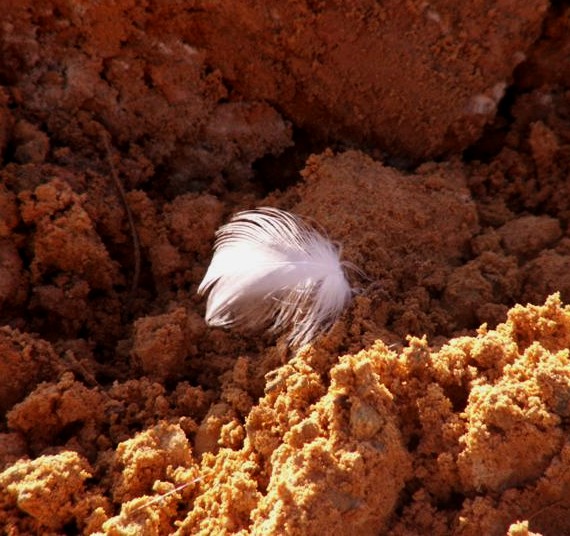
The ground we stood on was red dirt typical of this area. This feather had lodged in it. I don't know whom it had belonged to.
On Saturday, Mary and I -- having reached the tail end of our post-nasal drip -- bundled up in chilly weather and joined several dozen other people on a birding expedition to the Citrus County Landfill under the leadership of birder Dick Blewitt. We were joined by crows, gulls, and both turkey and black vultures; but we were there mainly to see bald eagles. (A press release of the event is here. More on Blewitt and our local birding trails is here.)
The landfill did not disappoint....
Before I moved to central Florida, when I thought of landfills the first place that came to mind had been Fresh Kills on Staten Island. More than 20 years ago that landfill was enormous and vile for anyone passing that part of town. It closed in 2001; New York City now plans to convert it into park land.
Bordering the Withlacoochie State Forest, the Citrus County Landfill is a pleasure. What's more, it has birding trails. Its numerous recycling opportunities and provision of mulch and compost remind me of the Cambridge Department of Public Works, where Mary and I had recycled everything we could think of. In Cambridge, though, we saw no vultures or eagles, though we did occasionally spot a red-tailed hawk.
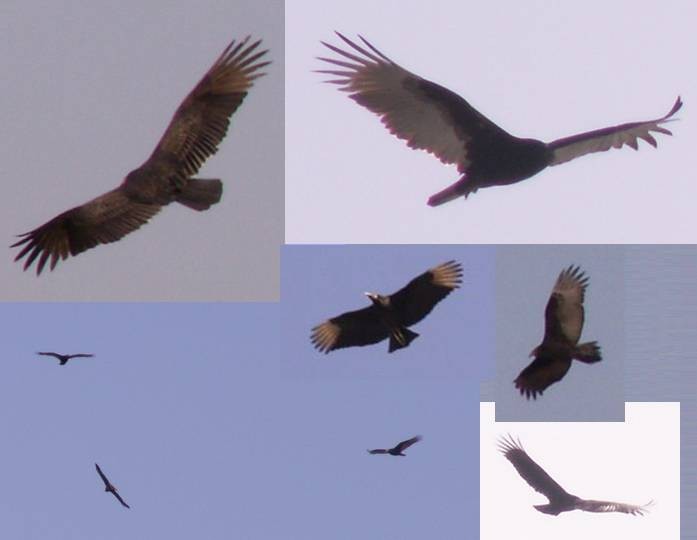
When we hiked to the summit of Mt. Monadnock in 1996, we were thrilled to watch turkey vultures riding the updrafts to either side of our ridge trail. Down here we see them daily this time of year and have become quite blase about the "Florida buzzards." Most of the birds shown here are turkey vultures. The bird in the center with the light wingtips is a black vulture.
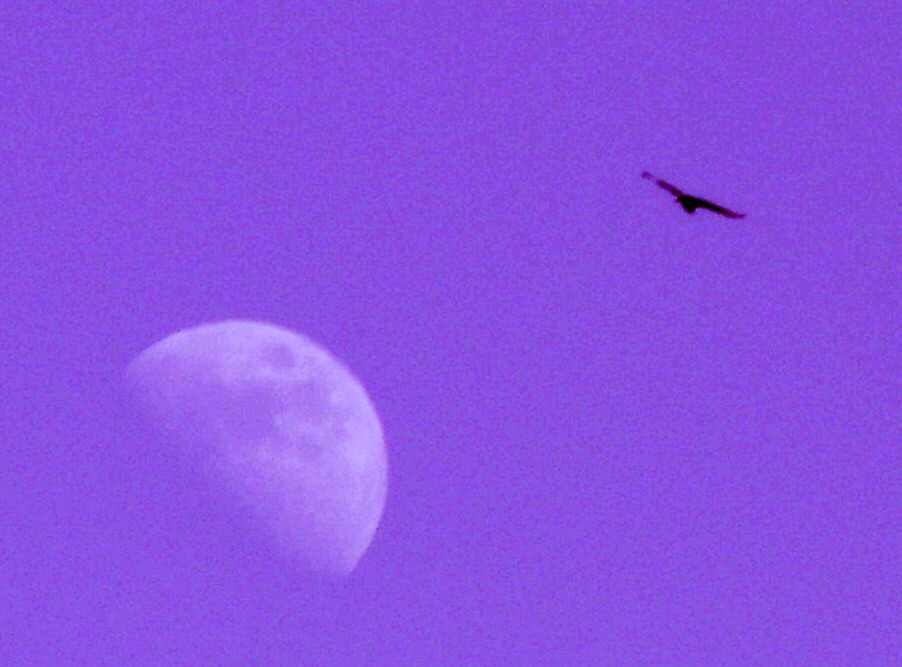
A turkey vulture glides by a moon just past first quarter. I color-altered this shot to bring out the contrasts.
The Eagle Watch took place after the landfill had closed to the public for the day. Employees spread the latest crop of garbage inside one of the cells, which made this prime feeding time for the birds.
We learned that the mating season for bald eagles lasts from November through January, at least here; and that next to Alaska, Florida contains the largest breeding bald eagle population. I had seen no eagles -- at least, none that I was aware of -- when I visited Juneau, Sitka, and Skagway back in August 1992. Today marked my first direct observation of them. Mary, who thinks she might have spotted a juvenile eagle before now, had not seen an adult bald eagle until today.
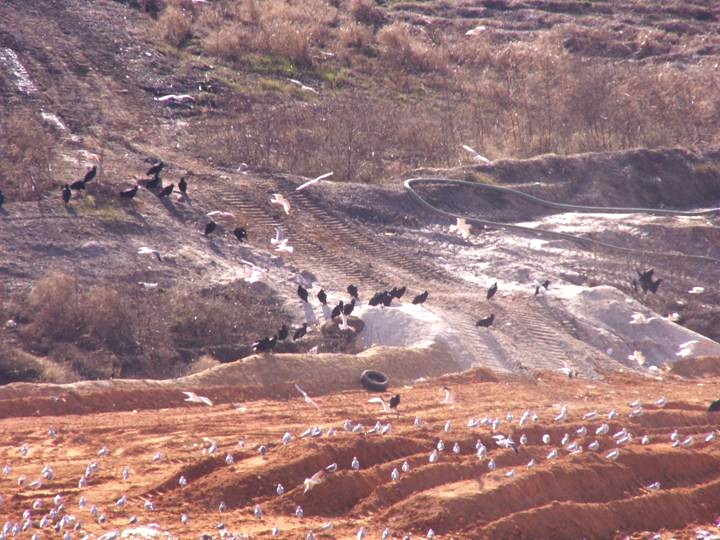
This is inside one of the landfill's cells. For the most part the vultures are up top, the gulls down below. Landfill employees spread garbage out of frame while we stand high above the cell.
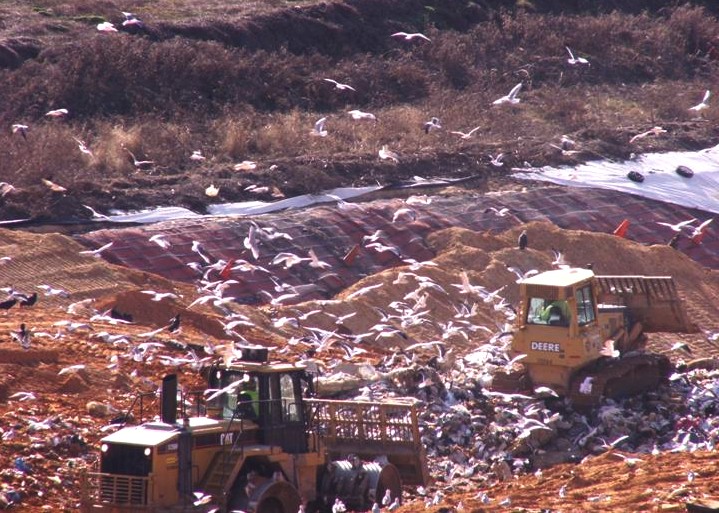
This shot has mostly gulls, but sitting on a mound just above the vehicle to the right is an adult bald eagle.
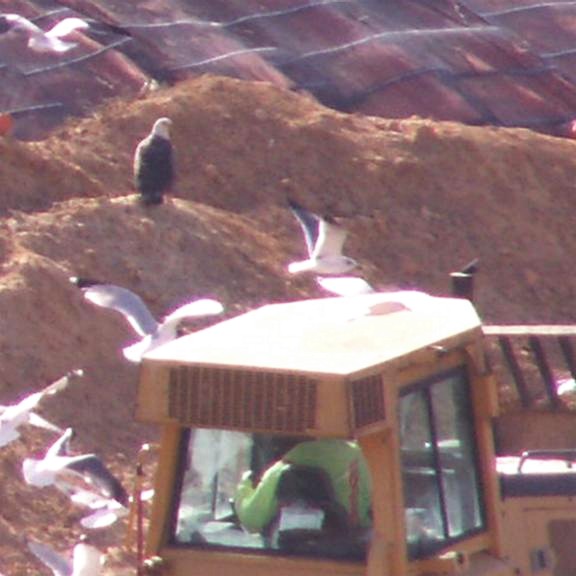
That same bald eagle in closeup, cropped from the previous shot.
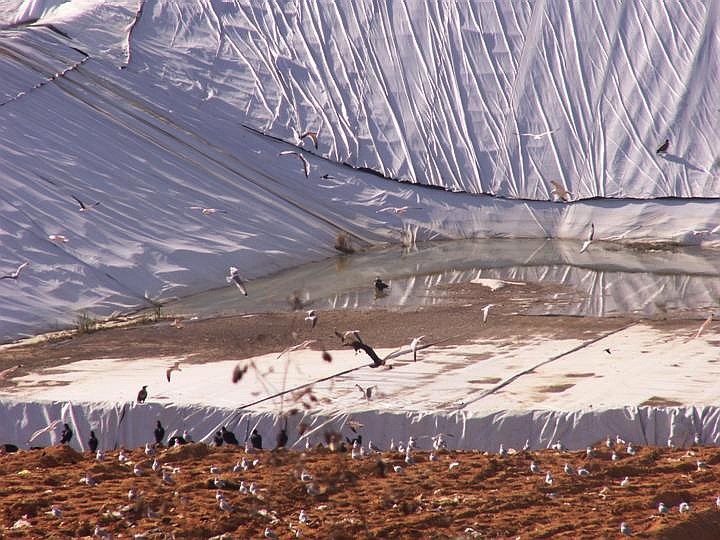
This photo has mostly gulls and vultures, but I can find four bald eagles: two adults and two juveniles. The adults are together at the leftmost edge of the water pool (see below). One juvenile perches on the white lining at upper right. Another sits to the left, where the lining folds down into a crevice.
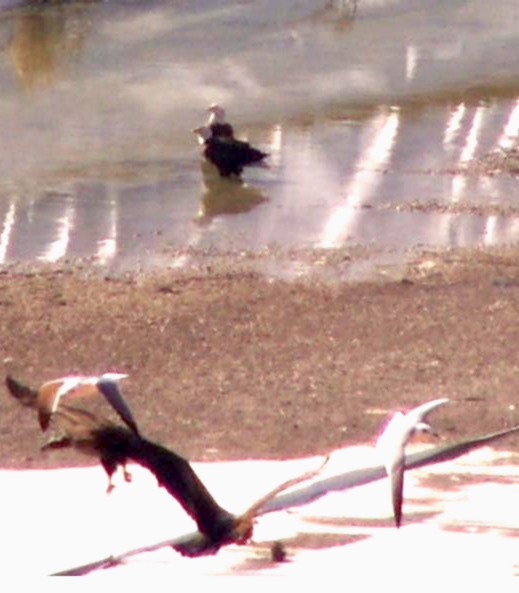
These adult bald eagles (standing in a pool of water at the top) are cropped from the previous shot.
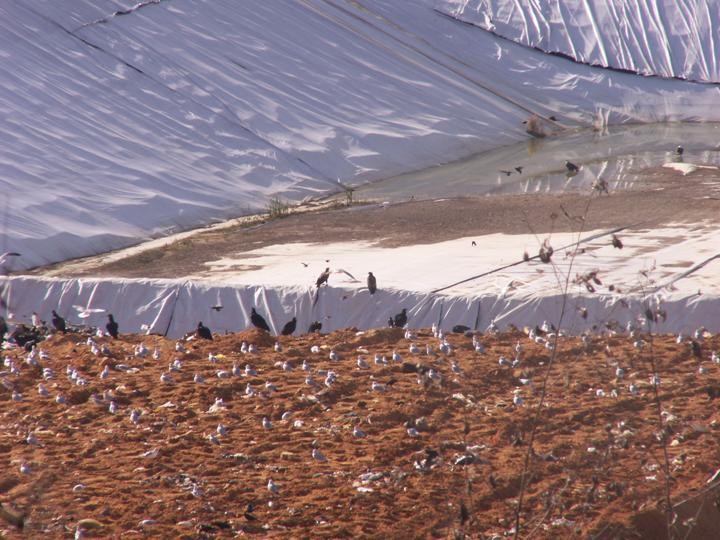
Two juveniles are together in the center of the frame, perched where the white lining folds down into a crevice. The adults -- the same as those shown above -- are still in the water pool, but one has moved to the back while the other has remained on the left.
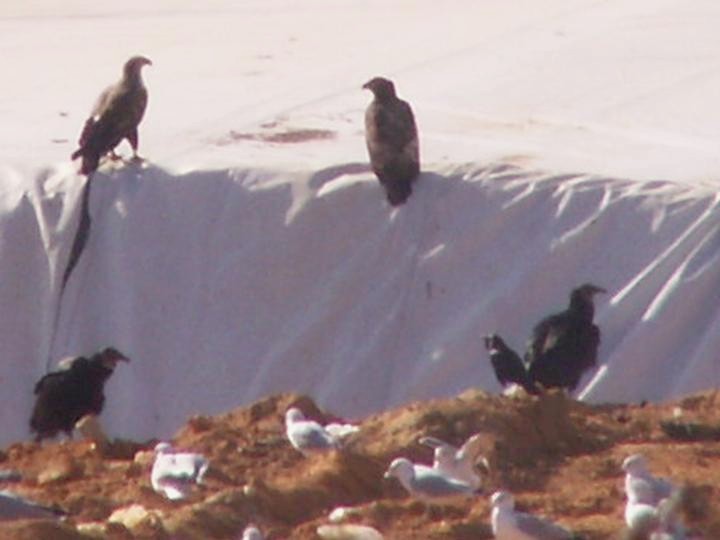
The same juveniles, cropped from the previous shot. Vultures and gulls are in the foreground; the smaller black bird is probably a crow.
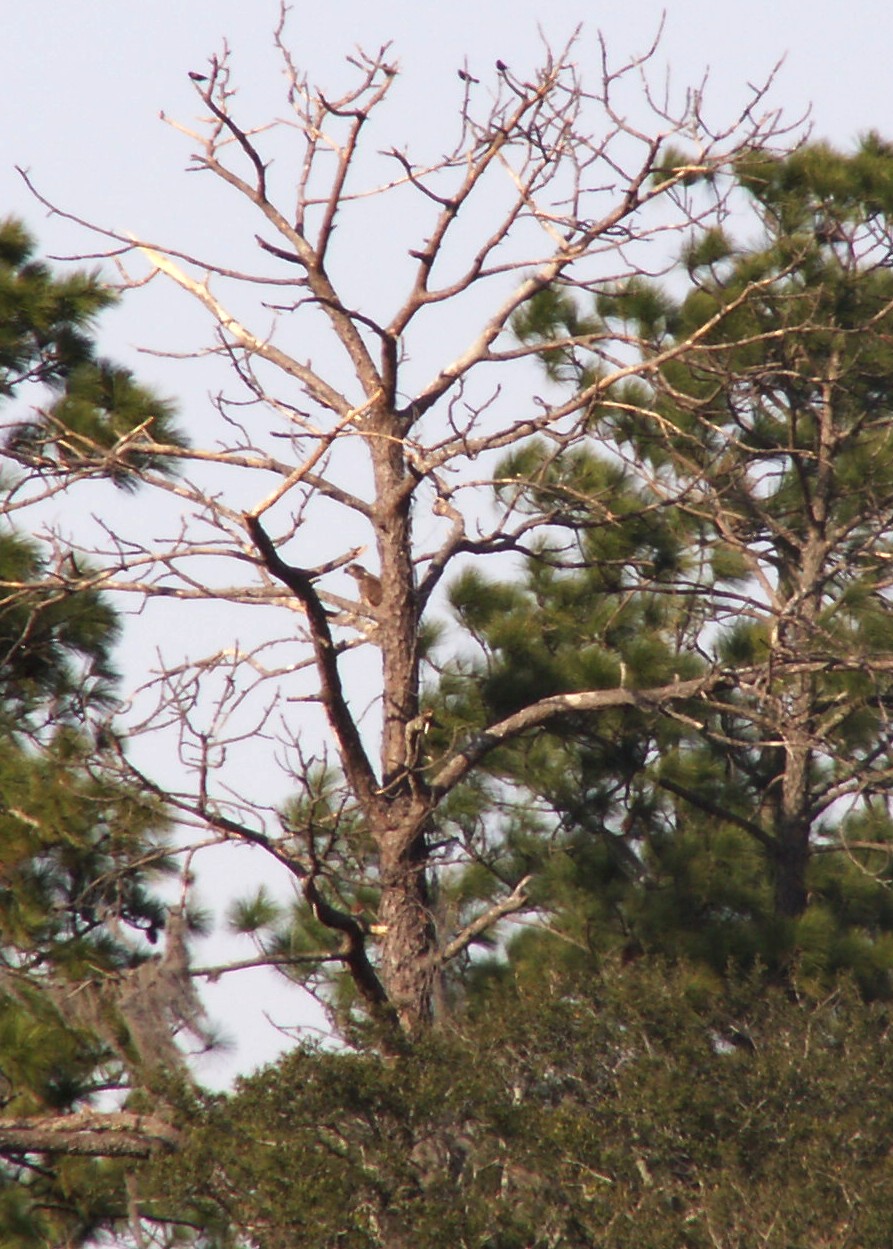
A juvenile is about halfway up the snag (dead tree), facing left.
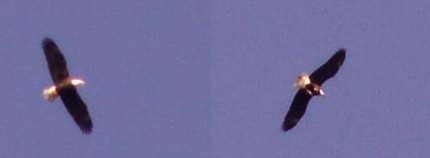
These are two different shots of probably the same eagle, though several were in flight above the forest.
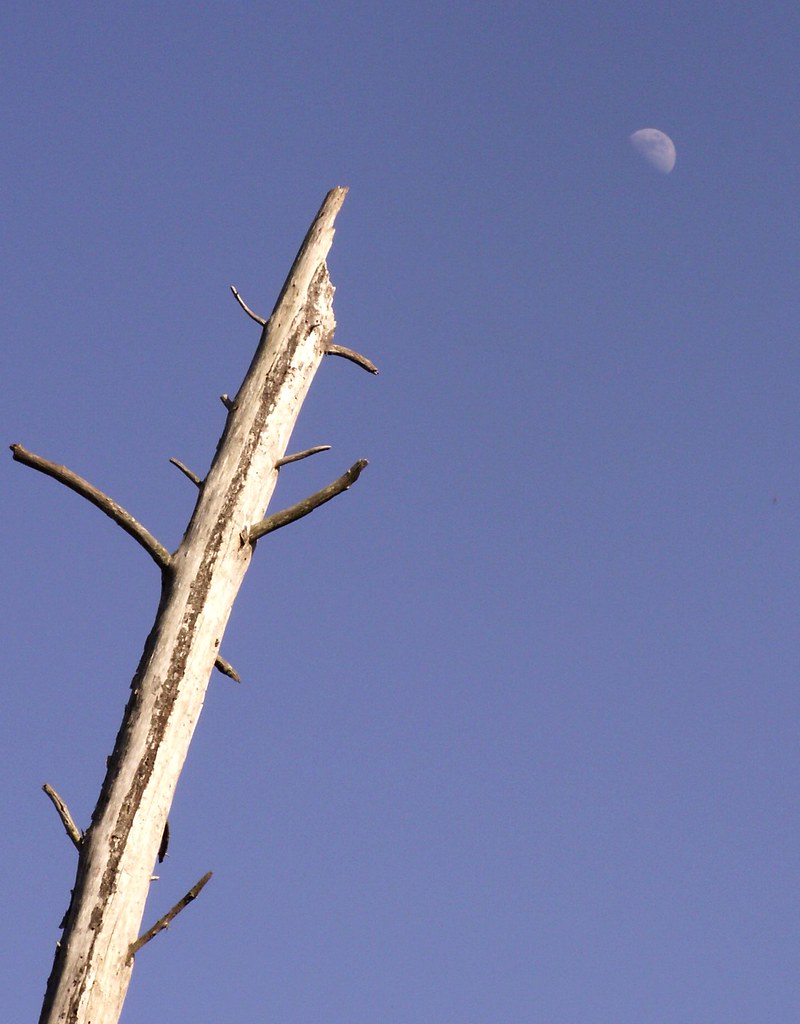
A snag points the way.
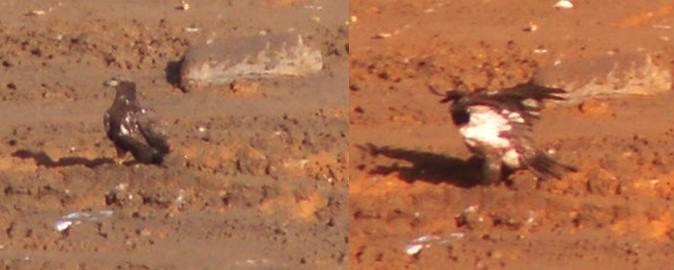
This juvenile is pretty well camouflaged on the floor of the landfill. I toyed with color to enhance the contrast in its raised wings in the right-hand shot.
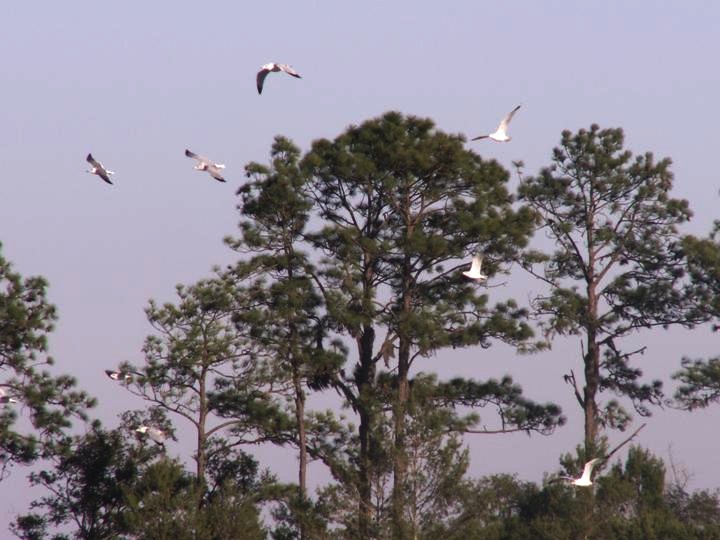
A better view of the Withlacoochie State Forest, complete with gulls.
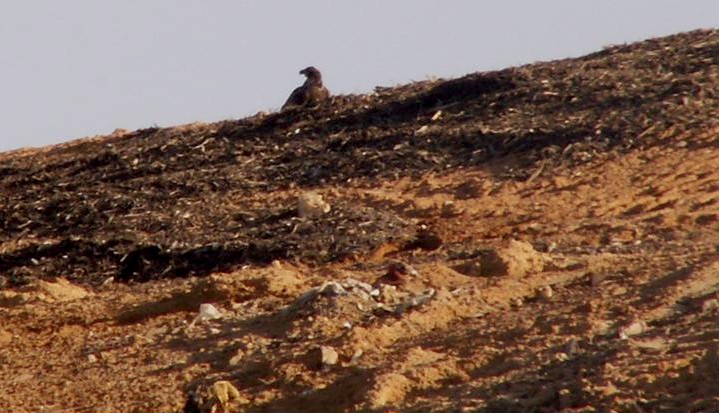
This juvenile was sitting above the landfill cell we watched being filled. Two more juveniles (shown below) sat far to its left.
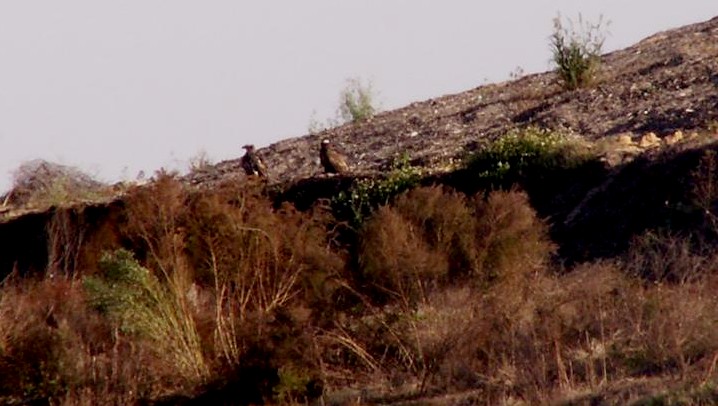
Mary and I had dinner out before heading home. In a mall parking lot I snapped the moon freehand, at a faster shutter speed to get crater and mare detail. I've set up the two exposures below as a stereogram, which can be viewed with crossed eyes, relaxing one's gaze while focusing on the "center" image.











2 Comments:
The photos of the landfill site are quite amazing, made beautiful by the birds; it is, afterall, their feeding ground, and they further compost inside their own digestive systems. That nature can create beauty out of such a process, the flocks, their flying, well, it's amazing. Thank you for these photos.
And in my disappeared response to your comment I asked if we could see the drawing Mary did of you, the one that had a fig leaf post-it note at your office before being moved home to be displayed unexpurged...
Thanks for the good words! I've posted the drawing here.
Post a Comment
<< Home